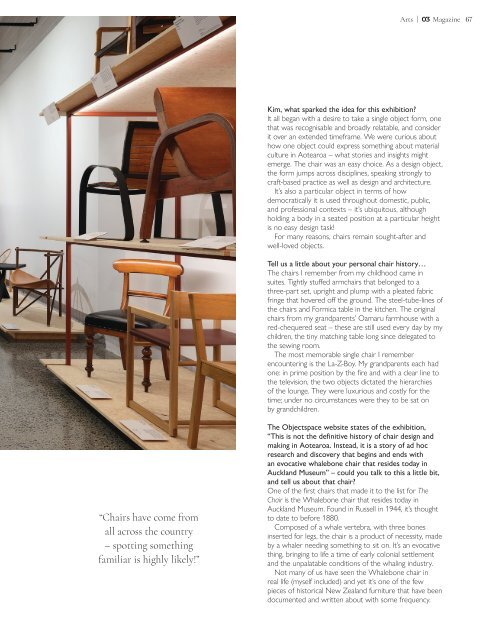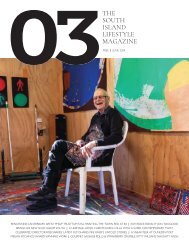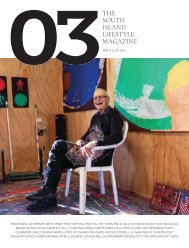Create successful ePaper yourself
Turn your PDF publications into a flip-book with our unique Google optimized e-Paper software.
Arts | <strong>Magazine</strong> 67<br />
Kim, what sparked the idea for this exhibition?<br />
It all began with a desire to take a single object form, one<br />
that was recognisable and broadly relatable, and consider<br />
it over an extended timeframe. We were curious about<br />
how one object could express something about material<br />
culture in Aotearoa – what stories and insights might<br />
emerge. The chair was an easy choice. As a design object,<br />
the form jumps across disciplines, speaking strongly to<br />
craft-based practice as well as design and architecture.<br />
It’s also a particular object in terms of how<br />
democratically it is used throughout domestic, public,<br />
and professional contexts – it’s ubiquitous, although<br />
holding a body in a seated position at a particular height<br />
is no easy design task!<br />
For many reasons, chairs remain sought-after and<br />
well-loved objects.<br />
Tell us a little about your personal chair history…<br />
The chairs I remember from my childhood came in<br />
suites. Tightly stuffed armchairs that belonged to a<br />
three‐part set, upright and plump with a pleated fabric<br />
fringe that hovered off the ground. The steel-tube-lines of<br />
the chairs and Formica table in the kitchen. The original<br />
chairs from my grandparents’ Oamaru farmhouse with a<br />
red-chequered seat – these are still used every day by my<br />
children, the tiny matching table long since delegated to<br />
the sewing room.<br />
The most memorable single chair I remember<br />
encountering is the La-Z-Boy. My grandparents each had<br />
one: in prime position by the fire and with a clear line to<br />
the television, the two objects dictated the hierarchies<br />
of the lounge. They were luxurious and costly for the<br />
time; under no circumstances were they to be sat on<br />
by grandchildren.<br />
“Chairs have come from<br />
all across the country<br />
– spotting something<br />
familiar is highly likely!”<br />
The Objectspace website states of the exhibition,<br />
“This is not the definitive history of chair design and<br />
making in Aotearoa. Instead, it is a story of ad hoc<br />
research and discovery that begins and ends with<br />
an evocative whalebone chair that resides today in<br />
Auckland Museum” – could you talk to this a little bit,<br />
and tell us about that chair?<br />
One of the first chairs that made it to the list for The<br />
Chair is the Whalebone chair that resides today in<br />
Auckland Museum. Found in Russell in 1944, it’s thought<br />
to date to before 1880.<br />
Composed of a whale vertebra, with three bones<br />
inserted for legs, the chair is a product of necessity, made<br />
by a whaler needing something to sit on. It’s an evocative<br />
thing, bringing to life a time of early colonial settlement<br />
and the unpalatable conditions of the whaling industry.<br />
Not many of us have seen the Whalebone chair in<br />
real life (myself included) and yet it’s one of the few<br />
pieces of historical New Zealand furniture that have been<br />
documented and written about with some frequency.


















